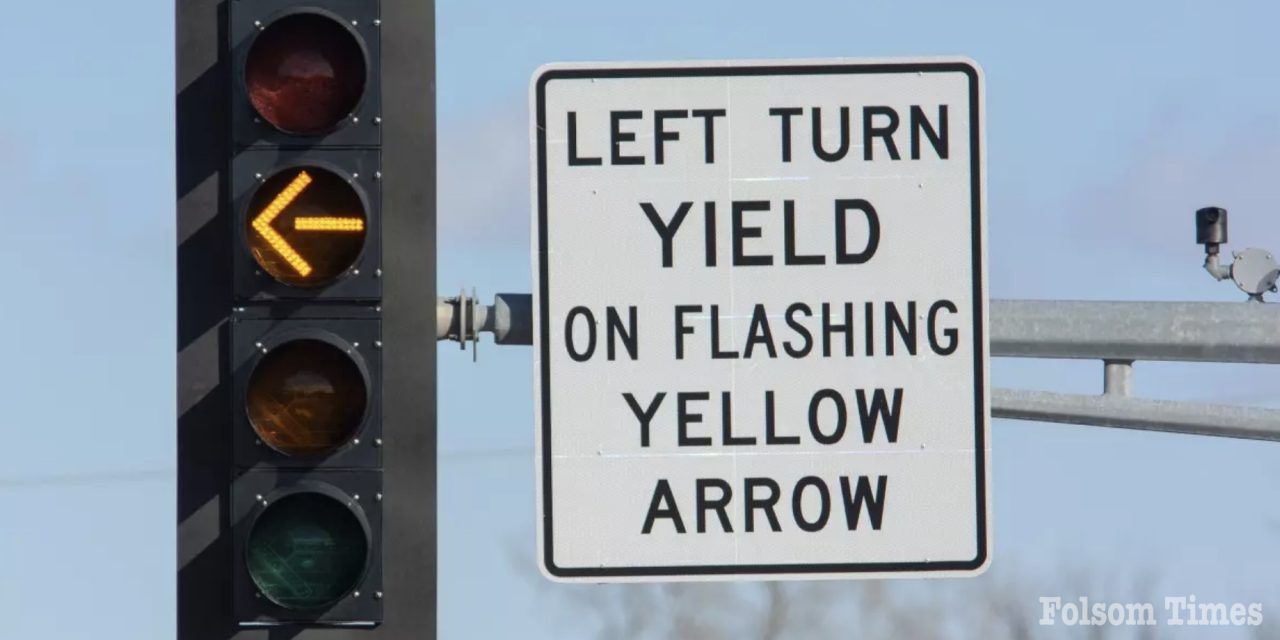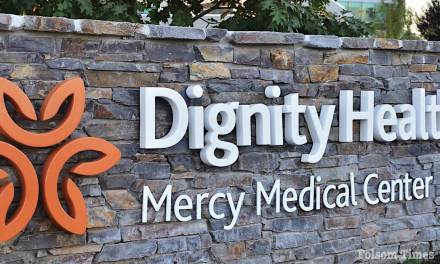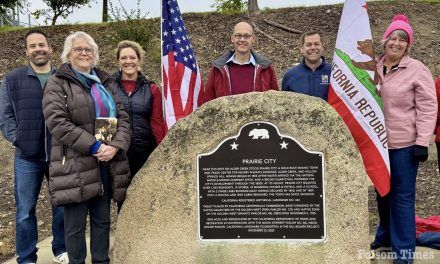The Folsom City Council voted Tuesday night to move forward with a pilot project that will bring Flashing Yellow Arrow (FYA) traffic signals to select intersections in the city, a move city engineers say will improve traffic efficiency and reduce emissions while aligning Folsom with regional traffic control standards.
The pilot program, approved unanimously under Resolution No. 11379, authorizes the installation of new traffic signal heads that use FYAs to manage left turns. This system, already used widely across California and the nation, allows drivers to make left turns after yielding to oncoming traffic when safe—an approach referred to as protected-permissive left-turn phasing.
Folsom currently uses protected-only left-turn signals at all intersections except one: Sutter Street at Riley Street. With Tuesday’s vote, that’s about to change.
“Many jurisdictions, including neighboring cities, have implemented FYAs, creating regional consistency for drivers,” Mark Rackovan, Folsom’s Public Works Director, shared in the City Staff Report presented at Tuesday’s meeting. The report noted that Roseville and Elk Grove already operate multiple FYA-equipped intersections, while Sacramento County has recently approved similar installations at Arden Way’s intersections with Morse Avenue and Professional Drive.
According to the staff report, FYAs are approved by both the Federal Highway Administration (FHWA) and the California Manual on Uniform Traffic Control Devices (CAMUTCD). The devices are also explained in the California DMV Handbook under Section 7: Laws and Rules of the Road, making them familiar to drivers across the state.
City engineers explained that the shift to FYA signals is expected to reduce unnecessary delays, especially during off-peak hours. Drivers will be allowed to make left turns during available gaps in oncoming traffic, decreasing idle times and improving traffic flow. Engineering studies show that such upgrades can reduce emissions by 9 to 12 percent by minimizing vehicle idling.
The approach also clearly distinguishes protected turn phases (with green arrows) from permissive ones (flashing yellow), helping drivers better understand the signal’s intent while supporting vehicle queue management.
How the Signals Work
The FYA signal uses a four-light vertical head to indicate turn permissions. A steady red arrow requires drivers to stop, while a steady yellow arrow warns that the signal is about to change. The flashing yellow arrow allows a driver to proceed left after yielding to oncoming traffic and pedestrians. A green arrow provides a fully protected left-turn phase.
The system is designed to operate only when it is safe to do so. FYAs will not activate if conflicting pedestrian crossings are being served. Site-specific conditions such as visibility, pedestrian activity, and collision history will be carefully assessed before installations move forward.
Determining what signals will be part of the pilot program
Tuesday’s decision allows the Public Works Department to begin engineering studies and develop a list of recommended intersections for implementation. While no intersections have yet been finalized, staff previously identified 19 locations across Folsom that meet preliminary criteria for FYA consideration. These include intersections on Oak Avenue Parkway, Riley Street, Natoma Street, Sibley Street, Empire Ranch Road, and East Bidwell Street.
Several of those locations—including Natoma Street at Coloma, Stafford, Wales, and Prison Road—would require significant infrastructure upgrades, such as new traffic signal cabinets estimated at $30,000 each. Others like Golf Links Drive at Silberhorn Road and Savannah Parkway at Mangini Parkway are estimated at $15,000 per intersection.
Trial locations for the Flashing Yellow Arrow pilot program will be formally selected in the next steps, following engineering review and cost assessments. Staff will report findings and recommendations to the City Council after the initial installations are complete.
The cost to implement signals
The estimated cost for each installation ranges from $15,000 to $47,000 depending on site-specific needs. These costs include hardware, cabinet replacements, labor, design, and a contingency allowance.
City staff confirmed that costs for the pilot program will be covered under the Public Works Department’s existing annual operating budget. No additional funding is required at this time.
The project qualifies as categorically exempt under the California Environmental Quality Act (CEQA) because it involves only minor alterations to existing facilities. All work will occur within current rights-of-way and does not represent an expansion of use.
To ensure public understanding, the city will launch a community outreach campaign prior to activating any FYA signals. Materials will include pamphlets distributed to nearby residents, a video tutorial hosted on the city’s website, and coordinated efforts with local media outlets.
Activation of the first FYA signal is expected by late 2025 or early 2026. The results of the trial will be presented at a future City Council meeting to evaluate its effectiveness and discuss possible citywide expansion.
“The adoption of FYAs has been widespread across California and the United States and is recognized as a safe and effective left-turn phasing strategy when installed at appropriate locations,” Rackovan wrote in the report.
Copyright © 2025, Folsom Times, a digital product of All Town Media LLC. All rights reserved. No portion of this publication may be reproduced, distributed, or transmitted in any form or by any means, without the prior written permission of the publisher.




